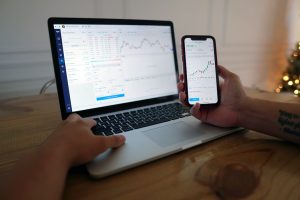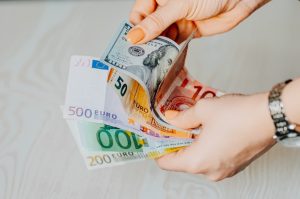Forex, short for foreign exchange, is the market where currencies are traded. It is the largest and most liquid market in the world, with an average daily trading volume of over $5 trillion. Forex trading offers the potential for high returns, but it also carries a high degree of risk. Before opening a forex account, it is important to understand what is required and how to choose the right broker.
1. Choose a Broker
The first step in opening a forex account is to choose a broker. A broker is a company that facilitates the buying and selling of currencies. There are many brokers to choose from, each with different features, fees, and trading platforms. It is important to research and compare brokers before choosing one.
Some factors to consider when choosing a broker include:
– Regulation: The broker should be regulated by a reputable financial authority, such as the Securities and Exchange Commission (SEC) in the United States or the Financial Conduct Authority (FCA) in the United Kingdom. This ensures that the broker is operating under strict guidelines and is accountable for its actions.
– Fees: Brokers may charge fees for trading, such as spreads (the difference between the bid and ask price), commissions, and rollover fees (for overnight positions). It is important to understand the fees and how they will affect your trading profits.
– Trading Platform: The trading platform is the software used to place trades and monitor positions. It should be intuitive, reliable, and offer the tools and features you need. Popular trading platforms include MetaTrader 4 and 5, cTrader, and TradingView.
– Customer Service: The broker should have responsive customer service that can assist with any issues or questions.
2. Provide Personal Information
Once you have chosen a broker, you will need to provide personal information to open an account. This may include your name, address, phone number, email address, and date of birth. You may also be required to provide a government-issued ID and proof of address, such as a utility bill.
The broker will use this information for identity verification and to comply with anti-money laundering regulations. It is important to provide accurate information and keep it up to date.
3. Fund Your Account
After your account is approved, you will need to fund it with money to start trading. The amount required to open a forex account varies depending on the broker and the account type. Some brokers offer mini accounts with a minimum deposit of $100 or less, while others require a larger deposit.
There are several ways to fund a forex account, including:
– Bank Transfer: You can transfer funds from your bank account to your forex account. This method may take a few days to process.
– Credit/Debit Card: You can use a credit or debit card to make a deposit. This method is usually instant, but may incur fees.
– E-wallets: You can use e-wallets, such as PayPal, Skrill, or Neteller, to make a deposit. This method is usually instant, but may also incur fees.
4. Start Trading
Once your account is funded, you can start trading. Forex trading involves buying and selling currency pairs, such as EUR/USD or GBP/JPY. The goal is to make a profit by buying low and selling high, or selling high and buying low.
To place a trade, you will need to choose a currency pair, enter the amount you want to trade, and select the direction (buy or sell). You can also set stop-loss and take-profit levels to manage your risk and potential profit.
It is important to have a trading plan and strategy, and to practice good risk management. Forex trading can be volatile and unpredictable, so it is important to never risk more than you can afford to lose.
In conclusion, opening a forex account requires choosing a reputable broker, providing personal information, funding the account, and starting to trade. It is important to research and compare brokers before choosing one, and to have a trading plan and strategy in place. Forex trading offers the potential for high returns, but it also carries a high degree of risk.





